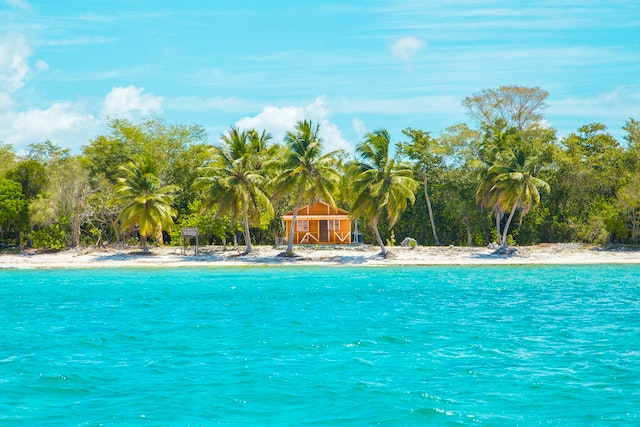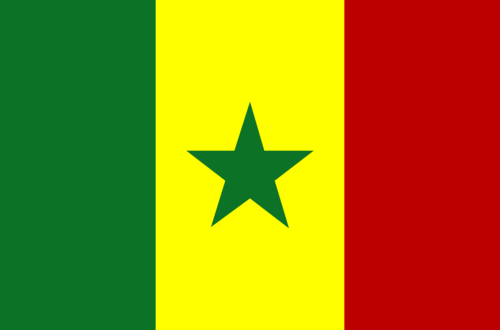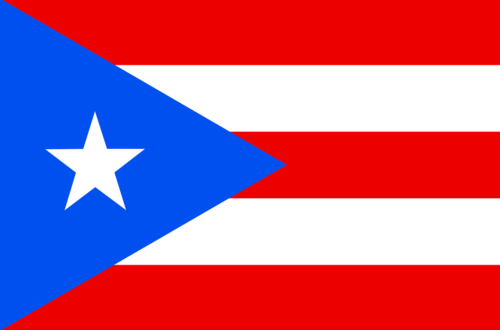
The Best 50 Interesting Facts About the Dominican Republic
Interesting Facts About the Dominican Republic
In this post, we will delve into 50 interesting facts about the Dominican Republic, shedding light on its captivating past, natural wonders, famous landmarks, and more.
Welcome to a fascinating journey through the Dominican Republic, a Caribbean island boasting a rich history, breathtaking landscapes, and vibrant culture.
From its connection to Christopher Columbus and the exploration of the New World to its stunning beaches and diverse wildlife.
This tropical paradise offers an endless array of unique experiences. Join us as we uncover the wonders of this enchanting country.
Facts About the Dominican Republic
1: Discovery by Christopher Columbus
The Dominican Republic holds a significant place in history as the site of Christopher Columbus’s first voyage to the New World in 1492.
2: Puerto Plata
Located on the northern coast of the country, Puerto Plata is one of the Dominican Republic’s most popular tourist destinations.
Known for its stunning beaches and vibrant nightlife.
3: Connection to the United States
The Dominican Republic shares the island of Hispaniola with Haiti and is located in close proximity to the United States.
Making it a convenient and accessible vacation spot for American travelers.
Natural Wonders of the Dominican Republic

4: Humpback Whales
The Dominican Republic’s Samaná Bay is a haven for humpback whales during their annual migration from the North Atlantic.
Witnessing these majestic creatures in their natural habitat is a truly unforgettable experience.
5: Caribbean Sea
Blessed with a prime location in the heart of the Caribbean Sea, the Dominican Republic boasts breathtaking beaches with crystal-clear turquoise waters, inviting visitors to relax and soak up the sun.
6: Amber Museum
Santo Domingo, the capital city, is home to the Amber Museum, which houses an impressive collection of ancient amber artifacts.
This amber, often containing prehistoric insects, provides a unique window into the past.
Cultural Heritage of the Dominican Republic
7: Juan Pablo Duarte
Considered the founding father of the Dominican Republic, Juan Pablo Duarte was a visionary leader.
Who played a crucial role in the country’s fight for independence from Haiti.
8: Dominican Flag
The national flag of the Dominican Republic features a white cross symbolizing salvation.
And four rectangles in blue and red, representing liberty and the bloodshed for independence.
9: Pico Duarte
Pico Duarte, located in the Cordillera Central mountain range.
Stands as the highest peak in the Caribbean, offering adventurous hikers stunning panoramic views of the surrounding landscapes.
Natural Landscapes of the Dominican Republic

10: Atlantic Ocean
The Dominican Republic is bordered by the Atlantic Ocean on its northern and eastern sides, allowing visitors to enjoy miles of pristine coastline and indulge in various water activities.
11: Lake Enriquillo
Lake Enriquillo, situated in the southwest of the country, is the largest lake in the Caribbean and hosts a unique ecosystem with diverse flora and fauna.
12: Western Hemisphere
The Dominican Republic holds the distinction of being the second-largest country in the Caribbean.
And the largest in the Western Hemisphere, encompassing an area of approximately 18,704 square miles.
Must-Visit Destinations of the Dominican Republic
13: Punta Cana
Punta Cana, known for its luxurious resorts and picturesque beaches, is a premier tourist destination that attracts visitors from around the world.
14: Oldest Cathedral
Santo Domingo is home to the Primada de América Cathedral, the oldest cathedral in the Americas, built in the early 16th century.
15: Oldest City
Santo Domingo, founded in 1496, holds the distinction of being the oldest continuously inhabited city in the Americas.
Its charming colonial architecture and historic sites transport visitors back in time.
Unique Traditions and Delights of the Dominican Republic

16: Mama Juana
Mama Juana is a traditional Dominican beverage made by infusing rum, red wine, honey, and various herbs.
It is believed to have medicinal properties and is often enjoyed as a digestif.
17: National Sport
Baseball holds a special place in the hearts of Dominicans and is considered the national sport.
The country has produced many talented players who have achieved success in Major League Baseball.
18: Largest Economy
The Dominican Republic boasts the largest economy in the Caribbean and Central American region.
Driven by sectors such as tourism, telecommunications, agriculture, and manufacturing.
Natural Wonders and Biodiversity of the Dominican Republic
19: Only Country
The Dominican Republic is the only country in the world to have a flag with a Bible and a cross depicted on it.
20: Jurassic Park Connection
The Dominican Republic’s amber deposits have yielded fascinating discoveries. Including the remains of a prehistoric mosquito preserved in amber.
Inspiring the creation of the famous “Jurassic Park” novel and film series.
21: Proximity to Puerto Rico
The Dominican Republic shares a maritime border with Puerto Rico. Which is located just 80 kilometers (50 miles) to the east.
Outdoor Recreation and Scenic Beauty of the Dominican Republic

22: Golf Courses
Golf enthusiasts will find their slice of paradise in the Dominican Republic. As it is home to numerous world-class golf courses designed by renowned architects.
23: Bay of Samaná
The Bay of Samaná, located on the northeast coast, is a natural sanctuary renowned for its stunning beauty and is a popular spot for whale watching.
24: Endless Summer
With its warm tropical climate, the Dominican Republic enjoys an “endless summer” throughout the year.
Making it an ideal destination for sun-seeking travelers.
Nature Conservation of the Dominican Republic
25: National Parks
The Dominican Republic takes pride in its protected areas. Boasting 32 national parks that preserve the country’s diverse ecosystems and wildlife.
26: Lowest Elevation
Lago Enriquillo, located in the southwest, holds the distinction of being the lowest elevation point in the Caribbean. Sitting approximately 46 meters (151 feet) below sea level.
27: Lowest Point
Lago Enriquillo also encompasses the lowest point in the country. Known as Hoyo de Pelempito, which reaches a depth of 46 meters (151 feet) below sea level.
Currency and Symbols of the Dominican Republic
28: Dominican Peso
The official currency of the Dominican Republic is the Dominican Peso (DOP). Which is represented by the symbol “$” or “RD$”.
29: National Flag Symbolism
The national flag of the Dominican Republic features a white cross that divides the flag into four rectangles.
The blue rectangles symbolize liberty. While the red represents the bloodshed for independence.
30: Famous Amber Stone
The Dominican Republic is renowned for its production of amber. With the most famous and sought-after variety being the translucent blue amber.
Historical Significance of the Dominican Republic
31: Second Largest Island
Hispaniola, the island shared by the Dominican Republic and Haiti, is the second-largest island in the Caribbean, after Cuba.
32: Juan Marichal
Juan Marichal, a Dominican professional baseball pitcher. Is considered one of the greatest pitchers in Major League Baseball history. And was inducted into the Baseball Hall of Fame.
33: National Anthem
The national anthem of the Dominican Republic is called “Quisque ya Perla” (The Most Precious Pearl).
And it holds deep significance for the Dominican people, evoking patriotism and national pride.
Rich Historical Heritage of the Dominican Republic

34: Colonial City of Santo Domingo
The Colonial City of Santo Domingo, a UNESCO World Heritage Site, showcases the rich colonial history of the Dominican Republic.
With its well-preserved cobblestone streets, historic buildings, and iconic landmarks.
35: First University
The Dominican Republic is home to the first university established in the Americas. Universidad Autónoma de Santo Domingo, founded in 1538.
36: Dominican Republic Shares
The Dominican Republic shares the island of Hispaniola with Haiti, occupying the eastern two-thirds of the island.
Natural Marvels and Breathtaking Landscapes of the Dominican Republic
37: 86th Most Populous Country
With a population of approximately 10.8 million people, the Dominican Republic ranks as the 86th most populous country in the world.
38: Warm Climate
The Dominican Republic enjoys a warm tropical climate throughout the year, with average temperatures ranging from 77°F (25°C) in winter to 86°F (30°C) in summer.
39: Land Area
Spanning an impressive land area of 18,704 square miles, the Dominican Republic encompasses diverse landscapes. From mountains and valleys to coastal plains and pristine beaches.
National Symbols and Icons of the Dominican Republic
40: Members of the Armed Forces
The Dominican Republic has various branches of the armed forces. Including the Army, Navy, Air Force, and National Police, responsible for ensuring the nation’s security and defense.
41: Eastern Two-Thirds of Hispaniola
The Dominican Republic occupies the eastern two-thirds of the island of Hispaniola. While Haiti encompasses the western third.
42: Capital City of the Dominican Republic
The capital city of the Dominican Republic is Santo Domingo, a vibrant metropolis where modernity blends seamlessly with historic charm.
Vibrant Culture and Traditions of the Dominican Republic

43: National Obsession
Baseball is not just the national sport of the Dominican Republic but also a national obsession.
It unites people of all ages and backgrounds, reflecting the country’s passion for the game.
44: Palm Trees
The Dominican Republic’s landscapes are dotted with graceful palm trees. Adding to the tropical allure and providing shade for leisurely strolls along the beaches.
45: Popular Singer
The Dominican Republic has produced many talented musicians. One of the most beloved and internationally recognized figures is Juan Luis Guerra.
Known for his fusion of merengue, bachata, and other musical styles.
Geographic and Natural Highlights of the Dominican Republic
46: Total Area
With a total area of approximately 18,704 square miles, the Dominican Republic is larger than many countries in the Caribbean and Central America.
47: Hillary Clinton
The Dominican Republic holds the distinction of being the first country visited by a sitting U.S. Secretary of State, Hillary Clinton, during her term in 2009.
48: National Dance
Merengue, a lively and rhythmic dance, is the national dance of the Dominican Republic, captivating audiences with its infectious beats and energetic movements.
Flora and Fauna of the Dominican RepublicFact 49: National Tree
49: National Tree
The national tree of the Dominican Republic is the mahogany tree (Swietenia mahagoni), renowned for its beautiful hardwood and contribution to the country’s furniture industry.
50: Country’s National Bird
The national bird of the Dominican Republic is the Cigua Palmera (Palmchat), a small green bird with a distinctive crest that is endemic to the island.
Conclusion:
The Dominican Republic is a captivating destination that offers a unique blend of natural wonders, historical heritage, and vibrant culture.
From its connection to Christopher Columbus and the exploration of the New World to its stunning beaches, diverse wildlife, and rich traditions, this Caribbean island leaves visitors in awe.
Whether you’re exploring the oldest city in the Americas, savoring the flavors of traditional cuisine, or immersing yourself in the rhythms of merengue, the Dominican Republic promises an unforgettable experience.
So, pack your bags and embark on an adventure to discover the endless treasures that this enchanting country has to offer.
Perhaps you want to learn more about Thailand – The Land of Smiles.
Remember, these 50 interesting facts about the Dominican Republic are just the tip of the iceberg.
There is so much more to explore and experience in this tropical paradise.
Let the warmth of the Caribbean sun, the breathtaking landscapes, and the hospitality of the Dominican people enchant you as you create lifelong memories in this captivating corner of the world.
5 Frequently Asked Questions About The Dominican Republic
What is the highest point in the Dominican Republic?
The highest point in the Dominican Republic is Pico Duarte, which stands at an impressive elevation of 10,164 feet (3,098 meters) above sea level. It is part of the Cordillera Central mountain range.
What is the official language of the Dominican Republic?
The official language of the Dominican Republic is Spanish. Spanish is spoken by the majority of the population and is used in government, education, and daily life.
What is the largest city in the Dominican Republic?
The largest city in the Dominican Republic is Santo Domingo, which is also the capital city. It is a vibrant metropolis with a population of over 2.9 million people.
What are the main industries in the Dominican Republic?
The Dominican Republic has a diverse economy with several main industries.
These include tourism, manufacturing, agriculture, telecommunications, construction, and mining.
Tourism is a significant contributor to the country’s economy.
What is the Bay of Samana known for?
The Bay of Samana is renowned for its stunning natural beauty and is considered one of the best places for whale watching in the Caribbean.
It attracts thousands of visitors each year who come to witness the migration of humpback whales.
These questions and answers shed light on various aspects of the Dominican Republic, including its geography, language, cities, industries, and natural attractions.
They provide a glimpse into the country’s rich heritage, diverse landscapes, and cultural significance.
Whether exploring the highest peaks, immersing in the Spanish language and colonial history, or enjoying the beauty of the Bay of Samana, the Dominican Republic offers a multitude of experiences for travelers to discover.





2 Comments
Pingback:
Pingback: